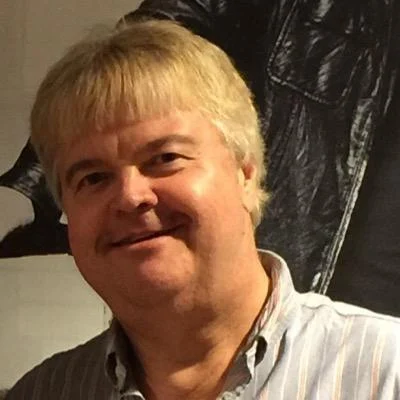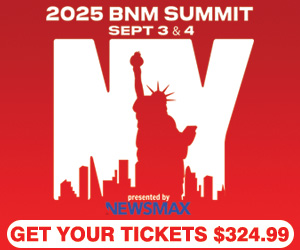To support the launch of the new Barrett Media, we’ve created a special series titled “20 Brands In 20 Days.” Highlighting successful stations across the country in various formats by conducting conversations with their brand leaders. Up next is Cumulus Media’s Louie Diaz. Louie is VP/Contemporary Formats and is the PD of Top 40 WWWQ (Q99.7)/Atlanta. The station we are highlighting today.
Jeff Lynn: Give me the state of the state on Top 40 right now.
Louie Diaz: The state of the state on Top 40 at the moment seems to be coming out of the doldrums that we’ve heard so much of over the years. The songs are getting stronger with research scores, and in some cases, we’re seeing triple-digit love scores on pop music, which we haven’t seen in quite some time in call out. That’s a big plus for the format, meaning that these songs will test from an active age group all the way to a young adult, active adult.
JL: How do you feel about seeing acts like Post Malone cross over to Country, and kind of broaden out like Top 40 was in the 70s and early 80s?
LD: Growing up and listening to Z100 and learning how to program radio by listening to Z100 in New York in the 80s, I remember Phil Collins by himself playing next to Expose, “Point of No Return,” and I would hear Philip Bailey team up with Phil Collins for “Easy Lover.” I think we’re getting close to that point right now.
Getting back to that, where it’s a fusion of artists, sound, and feel, and for Top 40, and even Country for that matter, I think it’s just a big benefit. It’s a benefit when sounds are able to fuse into a different dimension and give people feel-good vibes. That’s what it’s all about: a fusion of sounds that’s being accepted by the Top 40 audience, and that’s exciting for the format.
JL: So give me a top-down look at Q99.7
LD: It’s a very unique market in Atlanta because of its diverse population. You’re programming to multiple counties.
Q 99.7 caters to all ethnicities and it’s a wide net to fish in. The best part about it is that whether it’s Post Malone or Charlie XCX or Sabrina Carpenter or Kendrick Lamar or throwbacks like Rihanna or One Republic, it all fits for Q99.7, and it’s all based around our entry every single morning with “The Bert Show.”
JL: “The Bert Show” is clearly a behemoth for you.
LD: No doubt about it. Bert can run for mayor in Atlanta and give it a pretty good run for office. I’m sure he’s not going to do that, and that’s not in his future.
But if he did, he certainly has the name recognition and has worked hard over the years to continue to evolve the show with content that makes it a true player, even in today’s times.
JL: You’re still doing a $1,000 Thursday, Back-To-School, and things like that. Does contesting still play a big part in your strategy?
LD: Not only contesting, but if I can go back one second. PPM contests like $1,000 Thursdays are necessary, no doubt. But the radio station’s overall effect is community first.
JL: And I think that’s something that’s being lost on a lot of people these days, especially in PPM, where they think that that’s not necessary anymore. The smart players are still doing that because it does make a difference.
LD: You still have to work very, very hard to be top of mind, more so in PPM than ever before. Not only because of the measurement, but the competition that we’re facing. It’s beyond the FM.
It’s DSPs. It’s streaming on YouTube. It’s all sorts of things that are fighting for young American time. And we need to be in that fight also.
JL: Do you still see a sales stigma with Top 40? That the audience is too young and outside the money demo?
LD: Well, I think the radio stations with the big morning shows certainly make it a lot easier because of the heritage over time. They bring in that older demo that either grew up listening to them or were talking about things that are in young adult lives that have already happened in people’s lives and experiences. Is it a sellable demo? 25-54 is too wide of a target for Top 40.
No Top 40 is targeted 25-54. There are subgroups inside of 25-54. And in some cases, some of those subgroups that you target would be 25-34 or even 35-44.
But either way, if you’re doing those subgroups, you have to be number one or number two in those demos, or it just won’t work.
JL: Tell me a little bit about your social media strategy and how that’s working for you.
LD: Because we’re an active Top 40 station in a city like Atlanta, you can walk down the street and see the next Avengers movie or any show being filmed for Netflix. The city is literally the soundstage for so many movies and TV shows today that we have to work twice as hard to create content for social media. So again, going back to “The Bert Show” and starting there, our studios are fitted with HD cameras and audio.
And most of the content that you see on our videos are repurposed things from that morning show. And I’m glad to say that “The Bert Show” views on a daily basis. The reach is just unbelievable on how many people watch that show on Facebook or any other one of our video channels on a daily basis.
JL: That’s interesting because you’re just looking in on a show. Sometimes, that’s not the most exciting thing. So that demonstrates quite a passion for that morning show if people are watching it that way.
LD: We do test a lot of our content. We’re lucky enough to have research, and our content scores very, very high. We just give the audience a lot of what they want to hear on the radio and what they want to stream. And now we’ll give them an option to watch it on video.
JL: Anything that you want to add that I haven’t covered at this point?
LD: Yeah, I think for Q99.7, I’ll start there. Again, the entry of “The Bert Show” is a luxury that we have and something that we continue to work very hard on a daily basis. But the trick today is to obviously move that audience, ever-shrinking audience into other day parts, middays, afternoons, and nights.
At Q99.7, we work really hard to recycle audience to all day parts. And part two of that will be I’m very excited about where Top 40 Music is going today. We need to continue to work hard to develop artists, whether it’s Chappell Roan or Teddy Swims, or Charlie XCX.
We need to continue to work very hard to develop those artists to be long-term artists.
In the 1980s, Phil Collins was from Genesis. Stephen Tyler was from Aerosmith. You had all of these artists with a massive past.
Peter Cetera from Chicago. One after another, they became solo acts in the 80s, but they had all of this time brewing in the 70s as a massive rock band. Today, we don’t have many artists that have too much of a history from the previous decade.
We’re just creating new artists. It’s really difficult when we create new artists and don’t go the long haul with them. The Top 40 today doesn’t have the luxury it did in the 80s with familiar-sounding lead singers, artists, or songs.
We have to work twice as hard. It’s critical to develop young artists for the long haul so they’re here for the next decade.
Listen to Q99.7 here. Find them on Facebook and Instagram. Connect with Louie here.

Jeff Lynn serves as Editor of Barrett Media’s Music Radio coverage. Prior to joining Barrett Media, Jeff spent time programming in Milwaukee, Omaha, Cleveland, Des Moines, and Madison for multiple radio groups, including iHeartMedia, Townsquare Media, NRG Media, and Entercom (now Audacy). He also worked as a Country Format Editor for All Access until the outlet shut down in August 2023.
To get in touch with Jeff by email, reach him at Jeff@BarrettMedia.com.



